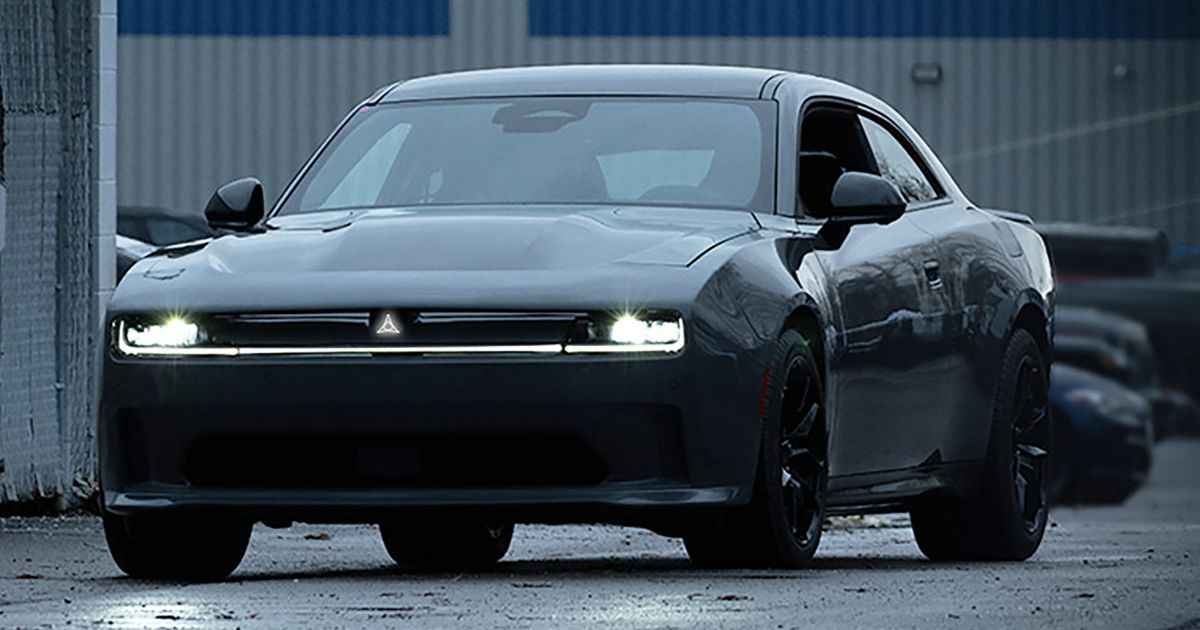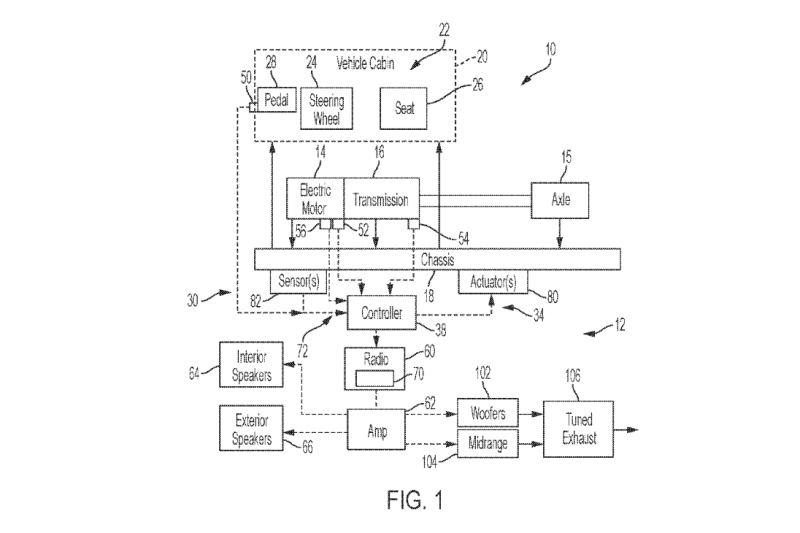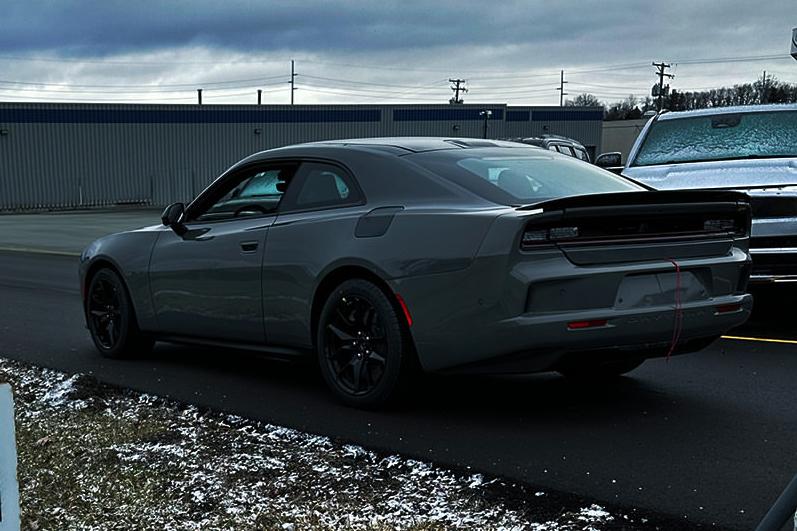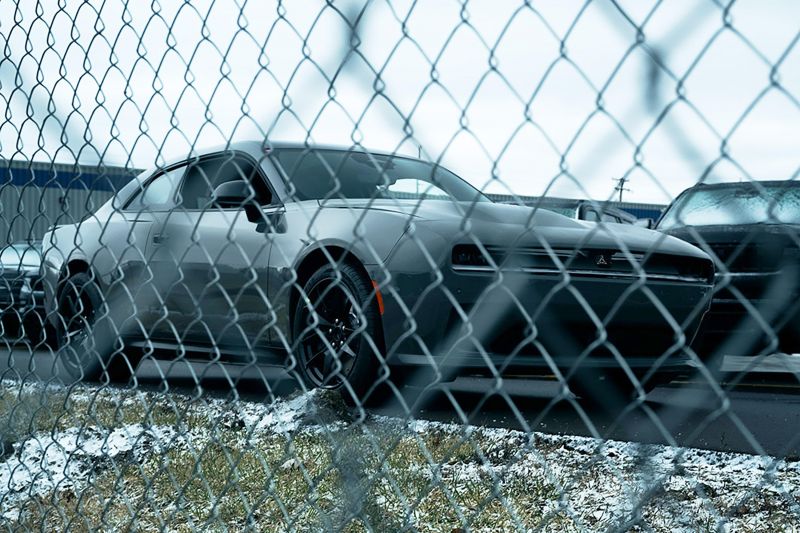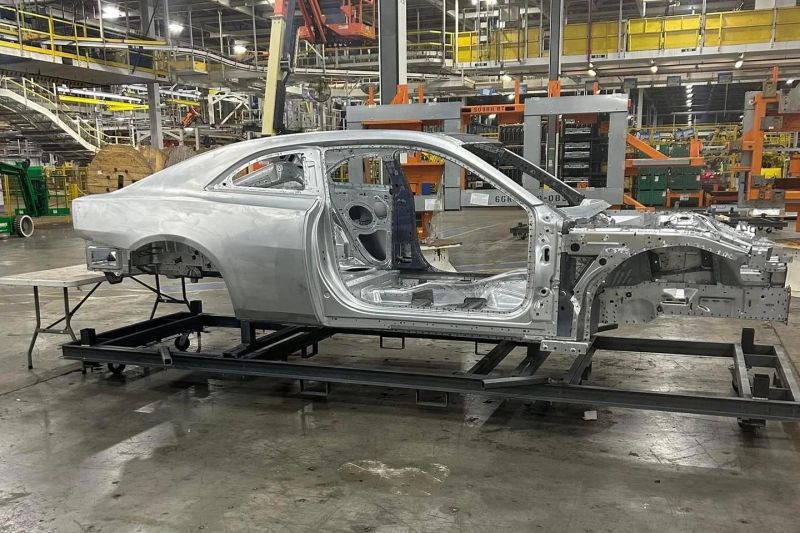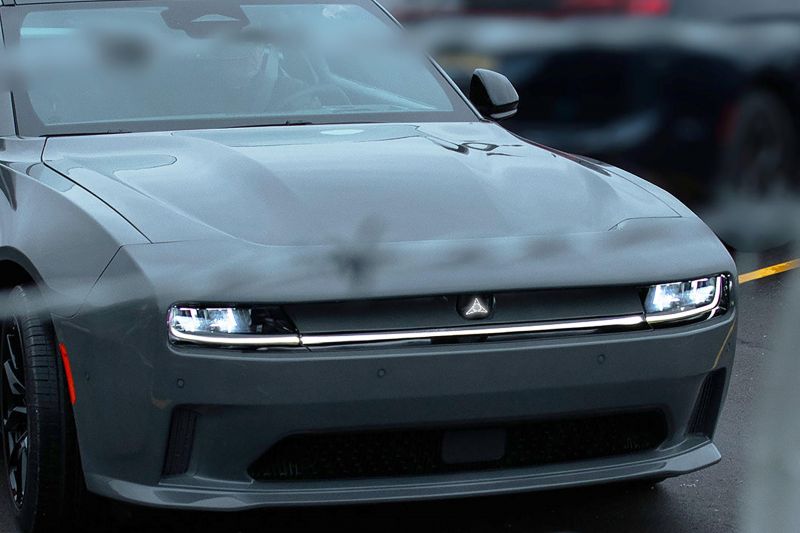[ad_1]
Dodge is readying its first all-electric muscle automobile, and it’s set to supply new expertise that goals to copy the sounds and sensations of its previous V8s.
The corporate is making an attempt to bridge the hole between conventional internal-combustion (ICE) powered muscle automobiles like its defunct Challenger and electrical autos (EV) like its upcoming Charger Daytona with various units.
The American automaker has lately patented an “energetic vibration enhancement” (AVE) system that may work in tandem with the beforehand introduced Fratzonic Chambered Exhaust and eRupt Multi-speed transmission to simulate the sensations of the model’s ICE powerplants.
Based on the patent, first shared by Mopar Insiders, the AVE system would use a number of sensors to watch automobile circumstances so as to generate vibrations within the chassis that may replicate the cadence and vibrations of an ICE powerplant.
For instance, actuators would try and mimic the sensations of an engine idling, driving and, mixed with different programs, even shifting gears.
As well as, Dodge thinks these programs geared toward replicating the sound and really feel of its previous V8 fashions might enhance security for automobile occupants and pedestrians.
The corporate claims the mix of audio system and vibration mills “will [allow the driver to] know the automobile is on and able to drive as a result of it gives audible and tactile suggestions to the motive force, which doesn’t happen with present electrical autos and may result in unintended automobile motion”.
Moreover, whereas maybe sounding like a gimmick, the beforehand introduced Fratzonic Chambered Exhaust “might double as a pedestrian warning sound”.
This technique sees various audio system and a tuning chamber put in, instead of a muffler in an ICE automobile, to create “a visceral “Darkish Matter” sound profile expertise in live performance with the eRupt transmission”.
Dodge claims the system can generate “a 126 dB roar that equals the SRT Hellcat”.
Little is understood in regards to the firm’s eRupt transmission. It appears to be greater than a purely software-driven system nevertheless, with Dodge claiming the unit is a “multi-speed transmission with electro-mechanical shifting”.
In concept, that makes the eRupt transmission much like the multi-clutch two-speed gearbox discovered within the Porsche Taycan. Within the Taycan, the two-speed gearbox permits for faster acceleration whereas balancing effectivity at greater speeds.
Dodge has beforehand confirmed the Charger Daytona will function each 400V and 800V architectures relying on the mannequin grade, with a number of ‘stage’ upgrades out there for each architectures.
With the 400V system, there’s a 340kW base output out there with eStage 1 and eStage 2 upgrades that increase energy to 370kW and 400kW, respectively.
A 440kW variant additionally runs a 400V electrical system, and might be had with eStage 1 and eStage 2 upgrades that increase energy to 470kW and 500kW, respectively.
Dodge hasn’t disclosed outputs for the wildest Charger SRT Daytona. The corporate has teased an 800V SRT Banshee powertrain bundle that shall be supplied with its personal stage upgrades.
Based on guardian firm Stellantis, this structure might assist a dual-motor drivetrain boasting as much as 660kW of energy. That’s greater than even the 603kW-626kW outputs of the outgoing Challenger SRT Demon.
At the same time as Dodge tries to make the Charger Daytona appear to be an combustion-powered automobile, rumours recommend it might nonetheless be making one with an precise petrol engine underneath the bonnet.
Dodge CEO Tim Kuniskis has beforehand confirmed the brand new STLA Massive structure (which the Daytona is predicated on) is a “multi-energy platform” that “has the flexibility to run an ICE engine”.
“I can put an ICE engine in it. It doesn’t imply we’re going to,” he advised The Drive.
“We’re definitely not launching with something like that. We’re launching full battery electrical.”
That denial hasn’t stopped rumours that Dodge will put the brand new Hurricane twin-turbocharged inline six into its next-generation Charger, nevertheless. In its highest-output tune, this 3.0-litre six pumps out 380kW of energy and 677Nm of torque.
If the Charger Daytona releases with the multitude of ICE simulation applied sciences detailed on this article, it could stand aside from most of its EV friends, apart from one: the Hyundai Ioniq 5 N.
The Ioniq 5 N is a flagship efficiency EV for the South Korean model and options simulated gear shifts and synthetic engine and exhaust sounds that may be heard from each inside and outdoors the automobile.
[ad_2]

